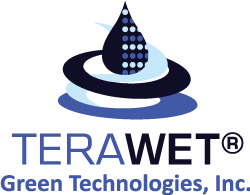ENPIKAY: WHAT IS IT?
-
Ionized phosphorous and potash embedded in a matrix of colloidal amino acids.
- ENPIKAY is a non-phosphite phosphorous nutrient and potash in ionized forms, which are embedded in a matrix of colloidal Amino acids and all bio-encapsulated employing a biopolymer, to help harvest a better crop.
- ENPIKAY safely replaces use of Chemical Fertilizers like Urea, DAP, Potash and Complexes in Agriculture and use of Dicalcium phosphate.
- In Agriculture, ENPIKAY can be conveniently applied through the drippers at early stages of crops and through the leaves (foliar) during the fruiting and later stages of growth to produce the best quality crop with higher yields.
- ENPIKAY contains Proteins, Phosphorous, Potash, Metabolites of Phosphorous and Potash Solubilizing Bacteria, Phytase and Phosphatase Enzymes, which is an unique combination.
- ENPIKAY is totally bioavailable and enters into plant system as a bioencapsulated molecule in whole and results in no antagonisms.
- Organic content in ENPIKAY can replace ten fold inorganic conventional NPK supplements.
The application of ENPIKAY at 6.66L(1.75 Gal) per acre, replaces 100 kg(220lbs) of granular fertilizer, with an uptake efficiency of 97% vs granular fertilizer at only 15-30%
MODE OF ACTION OF ENPIKAY
- Natural Ionized Phosphorus and Ionized Potassium and Colloidal Protein successfully combined with a biopolymer. The biopolymer employed by us is based on three natural organic polymers which exist in all living animals.
- This blend has been delicately handled to ensure the full benefit of high performance in all agricultural crops in a safe naturally occurring manner.
- This product is totally bio-assimable as a whole without break up and will also improve the performance of the microflora that may be present in the soil and plant.
When available Nitrogen is considered:
- ENPIKAY replaces inorganic Nitrogenous sources like Urea.
- Organic Nitrogen content of 1 Liter ENPIKAY can replace 15 Kg Urea.
When available P is considered:
- ENPIKAY replaces inorganic phosphorus sources like rock Phosphate and Superphosphate.
- Organic phosphorous content of 1 Liter ENPIKAY can replace 15 Kg Superphosphate.
When available Potash is considered:
- ENPIKAY replaces inorganic potash sources like muriate of Potash.
- Organic phosphorous content of 1 Liter ENPIKAY can replace 10 Kg MOP.
Metabolites of the Microbes and enzymes impart efficiency to the plants to uptake the insoluble Phosphorus and Potash available in the soil.
STUDY CONDUCTED
- Combinations of tri-sodium phosphate with boric acid and sodium humate gave superior results as compared to superphosphate (maximum productivity 74.7 MT/ha).
- Use of tri-sodium phosphate also obtained beetroot with the highest sugar (9.7%) and the lowest nitrate (1232 mg/kg) contents. (http://www.cababstractsplus.org/abstracts/Abstract.aspx?AcNo=20043146810 )
SALIENT FEATURES OF ENPIKAY:
- 100% BIOAVAILABILITY
- 100% WATER SOLUBLE PHOSPHOROUS
- ABSORBED AND METABOLIZED MORE EFFICIENTLY
- ABSORBED BY DIFFERENT ROUTES THAN INORGANIC MINERALS
- ABSORBED BY THE AMINO ACID TRANSPORT SYSTEM
- BUILDS CRITICAL LEVELS OF PHOSPHOROUS
- COST EFFECTIVE
- DELIVERED IN A FORM SIMILAR TO THAT FOUND IN THE PLANT
- EASY TO ADMINISTER
- HELPFUL IN THE CASES OF MALABSORPTION CONDITIONS
- IMPARTS THE PLANTS ABILITY TO WITHSTAND PHOSPHORUS DEFICIENCY
- IMPROVED PLANT HEALTH
- INCREASES LEVELS FOR ENERGY, WATER AND NUTRIENT HOLDING CAPACITY
- INCREASES PASSIVE ABSORPTION BY INCREASING WATER AND LIPID SOLUBILITY OF THE MINERAL NUTRIENT
- INCREASES THE ABILITY OF PLANTS TO RESIST PEST AND DISEASE ATTACK
- MAKES THE PLANTS EFFICIENT TO UPTAKE THE ORGANIC P AVAILABLE IN THE SOIL
- MEETS THE DEMANDS OF MODERN PLANT GENOTYPES WITH HIGHER REQUIREMENTS, MOST USEFUL IN STRESS CONDITIONS, MOVEMENT THROUGH CELL MEMBRANES
- NON-TOXIC TO THE PLANTS
- PROMOTES AVAILABILITY OF BOTH PHOSPHOROUS AND PROTEINS
- REBUILDS TIRED NUTRITION THROUGH REMINERALIZATION
- REDUCES INPUT COSTS THROUGH EFFICIENCY
- HELPS IN RESISTING DISEASES LIKE DOWNY MILDEW OF GRAPES, FRUIT ROT, ROOT ROT & CITRUS GUMMOSIS, LATE BLIGHT OF TOMATO ETC
- STABLE AT A LOW PH
- WORKS WELL IN NEUTRAL AND LITTLE ALKALINE SOILS ALSO
IN AGRICULTURE
RECOMMENDED CROPS
Corn, Soy bean, All Fruits, All Vegetables, Rice, Sugar cane, Wheat, Cotton, Tobacco, grains, nuts, citrus, all tree fruits, etc.
- 6.66 Liters of ENPIKAY can replace 100 Kg Complex Fertilizers like 17:17:17
Application methods:
Spraying, Sprinkler or Drip. However, foliar spraying is most efficient way.
When & how much?
- 8ml to 16 ml per liter of water for spraying/ Sprinkler/Drip; first during preparation of the soil before sowing; Then when the crop is 1-2 weeks old.
- Again one week before when it is going to flowering,
- Lastly 1-2 weeks before harvesting.
- In the cases of diseases like downy mildew of grapes, fruit rot, Root Rot & citrus Gummosis, Late blight of Tomato etc; 20- 30 ml per L of Water for spraying/ Sprinkler/Drip.
- Other key nutrients like all water-soluble fertilizers, nitrogen and trace elements can be mixed with ENPIKAY except for calcium fertilizers and concentrated magnesium solutions.
- In hydroponic systems, it should normally be added to the B tank along with the sulphates and trace elements.
- ENPIKAY has a buffering effect which will help stabilize the pH of the solution at around 5.5.
PROXIMATE ANALYSIS:
1. Phosphorous as P: 0.36 % Min
2. Phosphorous as P2O5: 0.764% Min
3. Potasssium: 0.36% Min
4. Aminoacids: 1.456% Min
5. Nitrogen: 0.23296% Min
6. Protease: 2000 IU/ml
7. Urease: 45 IU/ml
8. Phosphatase: 90 IU/ml
9. Chloride as Cl : 0.1%max
10. Iron (as Fe): 0.0005%max
11. Arsenic (as As): 0.0005%max.
12. pH: 4.3-4.9
13. Suitable pH Buffers
PACKAGING: 25 LITER BOTTLES.
Minimum purchase for shipment: (5) five pallets (1000 liters pallet)
(1) 20 ft container services 1515 acres.
(1) 40 ft container services 3030 acres

